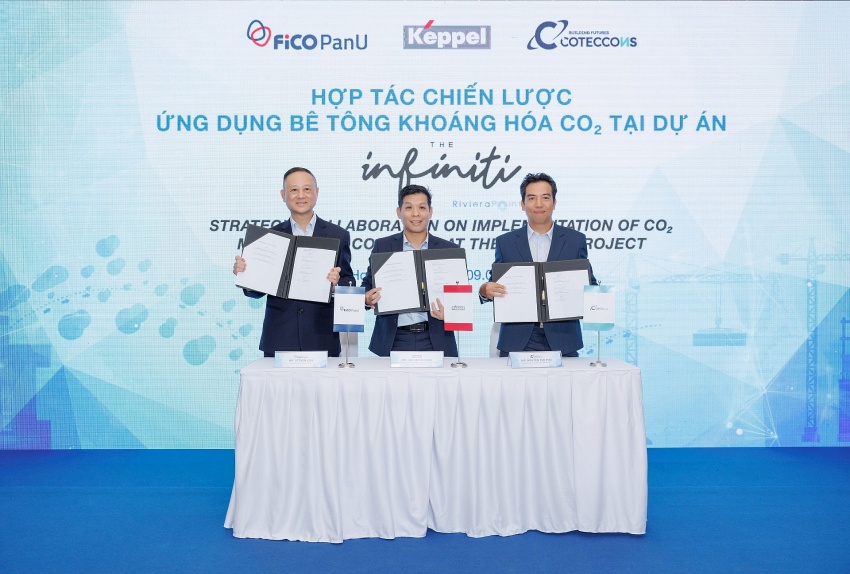
(Photo: FiCO Pan-United)
To embrace the green building transformation trend, Keppel, Singapore's largest multinational corporation, signed a Memorandum of Understanding (MOU) with Vietnamese concrete company FiCO Pan-United and construction firm Coteccons in early May, to apply Carbon Mineralized Concrete (CMC) technology in their construction. It claims to be Vietnam's first real estate company to adopt sustainable concrete technology to cut carbon emissions of the construction sector.
To cut carbon emissions of the industry, Vietnamese real estate developers introduce sustainable concrete
The two Vietnamese real estate companies cooperating with Keppel have impressive credentials too. They have supplied materials for Ho Chi Minh City (HCMC) iconic projects such as Metro Line 1, Landmark 81 skyscraper, Saigon Centre, VivoCity, Empire City, and the Ba Son Bridge.
Keppel expected that through this collaboration, they will apply sustainable CMC, along with various innovative building materials and 3D printing construction methods, to construct The Infiniti Riviera Point luxury apartments, located in the Phu My Hung area of District 7, HCMC.

Representatives from FiCO PanU, Keppel, and Coteccons signed the MoU in May. (Photo: Keppel)
CMC reduces carbon emissions over 2,000 tons compared with traditional building materials
"Carbon Mineralized Concrete" involves the addition of carbon dioxide during mixing and production procedure. This process seals carbon dioxide in the concrete and reduces the amount of needed cement simultaneously, but without compromising the structural strength. It is considered a sustainable concrete solution.
FiCO PanU's estimates that applying CMC technology in the construction of the Infiniti project, along with low-carbon cement, will reduce carbon emissions by 2,803 tons compared to traditional materials, equivalent to the amount of carbon dioxide absorbed by 46,348 trees over 10 years.
Keppel commits to replicating these solutions in other projects across Ho Chi Minh City. The company hopes that these technologies will contribute to creating a greener and more sustainable environment, thereby helping to achieve corporate environmental goals.
Alongside green building practices rise in Vietnam, the construction and building materials industries are actively reducing their carbon emission. According to Savills Vietnam, a real estate services company, about 52% of Grade A office buildings have obtained green certification. Nationwide, more than 20 office buildings have received LEED (Leadership in Energy and Environmental Design) or Singapore's Green Mark certification and 17 are in HCMC.
Source: tuoitre、Vietnam Investment Review、keppel


